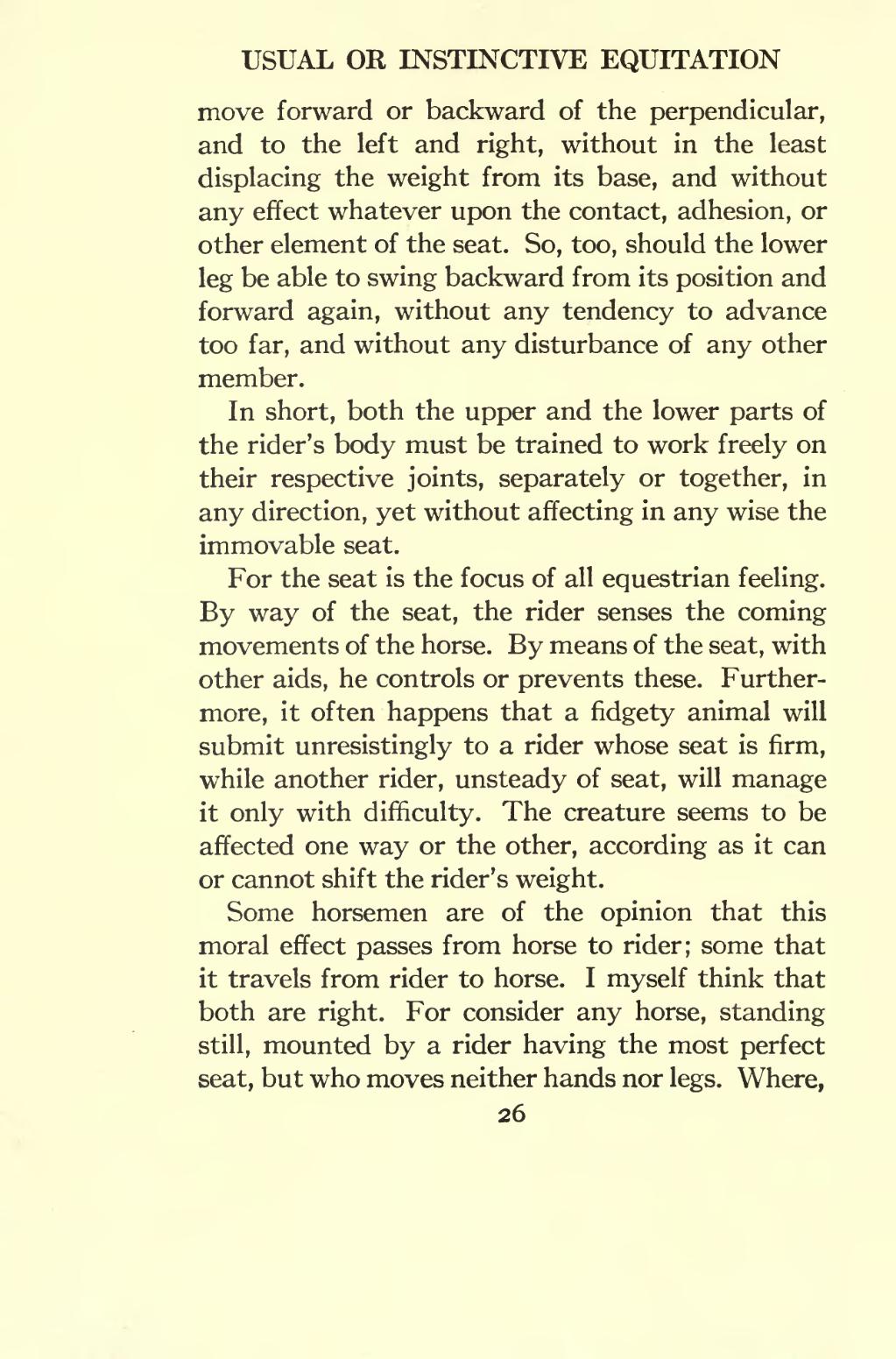move forward or backward of the perpendicular, and to the left and right, without in the least displacing the weight from its base, and without any effect whatever upon the contact, adhesion, or other element of the seat. So, too, should the lower leg be able to swing backward from its position and forward again, without any tendency to advance too far, and without any disturbance of any other member.
In short, both the upper and the lower parts of the rider's body must be trained to work freely on their respective joints, separately or together, in any direction, yet without affecting in any wise the immovable seat.
For the seat is the focus of all equestrian feeling. By way of the seat, the rider senses the coming movements of the horse. By means of the seat, with other aids, he controls or prevents these. Furthermore, it often happens that a fidgety animal will submit unresistingly to a rider whose seat is firm, while another rider, unsteady of seat, will manage it only with difficulty. The creature seems to be affected one way or the other, according as it can or cannot shift the rider's weight.
Some horsemen are of the opinion that this moral effect passes from horse to rider; some that it travels from rider to horse. I myself think that both are right. For consider any horse, standing still, mounted by a rider having the most perfect seat, but who moves neither hands nor legs. Where,

